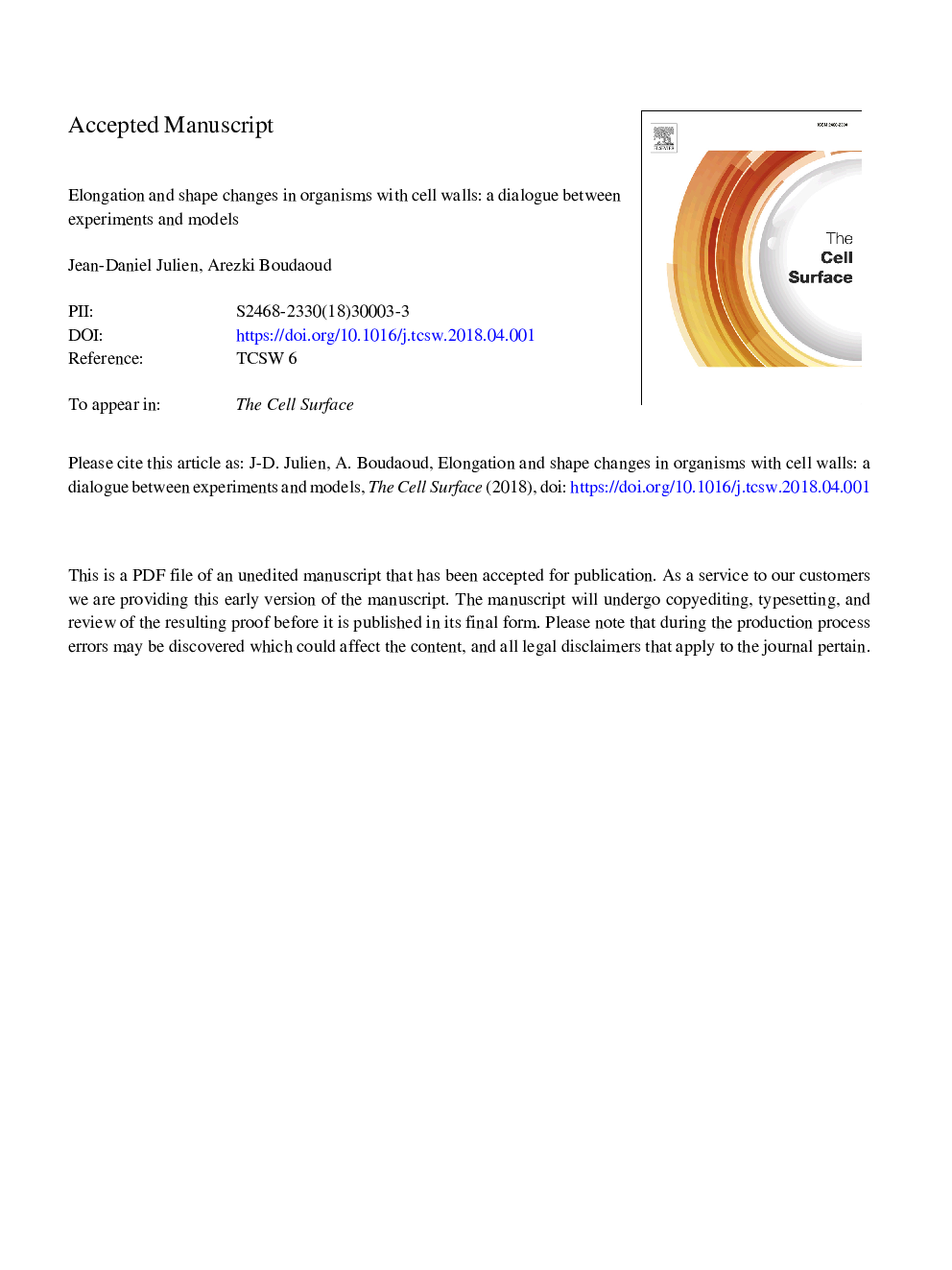| Article ID | Journal | Published Year | Pages | File Type |
|---|---|---|---|---|
| 8940003 | The Cell Surface | 2018 | 48 Pages |
Abstract
The generation of anisotropic shapes occurs during morphogenesis of almost all organisms. With the recent renewal of the interest in mechanical aspects of morphogenesis, it has become clear that mechanics contributes to anisotropic forms in a subtle interaction with various molecular actors. Here, we consider plants, fungi, oomycetes, and bacteria, and we review the mechanisms by which elongated shapes are generated and maintained. We focus on theoretical models of the interplay between growth and mechanics, in relation with experimental data, and discuss how models may help us improve our understanding of the underlying biological mechanisms.
Related Topics
Life Sciences
Immunology and Microbiology
Applied Microbiology and Biotechnology
Authors
Jean-Daniel Julien, Arezki Boudaoud,
